Throughout the month of March, visitors to the “Carrara and Michelangelo” Museum (CARMI) in Carrara will be able to witness live the restoration of the nineteenth-century plaster casts of theAcademy of Fine Arts, which celebrates its 250th birthday this year (it was in fact founded in 1769): the initiative was created as part of the exhibition Carrara 1800/1850: the Magisterium of the Academy of Carrara. Future masters on their way to Rome in the collections of the Gipsoteca, organized at CARMI (with staging by Giuseppe Cannilla and critical texts by Marco Ciampolini). The Carrara institute, inaugurated last June, will host, thanks to a collaboration between the Academy and the Cultural Department of the Municipality of Carrara, a temporary workshop where the final stages of the restoration of five plaster sculptures on display in the museum will be carried out. The workshop will be included in the normal visiting itinerary.
The restorations, directed by Luana Brocani and Carlo Sassetti (who will explain the restorations and aspects of the conservation of the works of art during the public opening appointments), will be conducted by students of the Academy. The aim of the initiative is to raise visitors’ awareness of the respect for and protection of cultural heritage, and at the same time to present the Academy’s activities: in fact, the restorations at the Villa Fabbricotti museum were also designed as an educational and orientation moment.
The five plaster casts being restored span the entire 19th century: the earliest is Luigi Bienaimé ’s John the Baptist (Carrara, 1795 - Rome, 1878), a work from 1820, made as an essay by the Belgian-born artist from Carrara for his boarding school in Rome (this is a particularly original work that treats the Baptist as a character with adolescent features, thus departing from traditional iconography, and harking back to the figures of Bertel Thorvaldsen, Bienaimé’s master). We then move on to Leda with the Swan by Giovanni Tacca (Carrara, 1802 - 1831), from about 1825: a seductive work that deals with a theme much appreciated by the students of the Academy of the time, although considered scholastic by critics it nonetheless marks an important moment of transition toward the more mature phase of Tacca’s art, here still indebted to Canova. Ferdinando Andrei ’sAgricoltore (Carrara, 1824 - Rome?, after 1855), also made as an essay, is from 1853: it expresses Andrei’s adherence to the naturalist art of the time, although it is a work that did not meet with critical acclaim as it was considered conventional. The fourth plaster is Saint Sebastian the Martyr by Giuseppe Lazzerini (Carrara, 1831 - 1895), dated 1855: it is an intense sculpture that combines a strong mystical drive with the naturalism typical of the time. Finally, the last plaster cast in chronological order is L’architetto Canina by Benedetto Cacciatori (Carrara, 1794 - 1871), from 1865: it is a portrait of Luigi Canina, architect of the Borghese family known for having designed the propylaea of the entrance to Villa Borghese (and Cacciatori’s work, steeped in classicism, is one of his most interesting portraits).
Following are the days and times when it will be possible to see the restorations:
Thursday, March 14, from 10 a.m. to 12:30 p.m. and 3 to 5 p.m. (Prof. Luana Brocani)
Friday, March 15, from 10 a.m. to 12:30 p.m. and 3 p.m. to 5 p.m. (Prof. Luana Brocani)
Thursday, March 21, from 10 a.m. to 12:30 p.m. and 3 p.m. to 5 p.m. (Prof. Carlo Sassetti)
Friday, March 22, from 10 a.m. to 12:30 p.m. and 3 p.m. to 5 p.m. (Prof. Carlo Sassetti)
Thursday, March 28, from 10 a.m. to 12:30 p.m. and 3 p.m. to 5 p.m. (prof. Luana Brocani)
Friday, March 29, from 10 a.m. to 12:30 p.m. and 3 p.m. to 5 p.m. (Prof. Luana Brocani)
Information is available by calling 335 1047450 or emailing museo.carmi@comune.carrara.ms.it. Below are pictures of the five plaster casts.
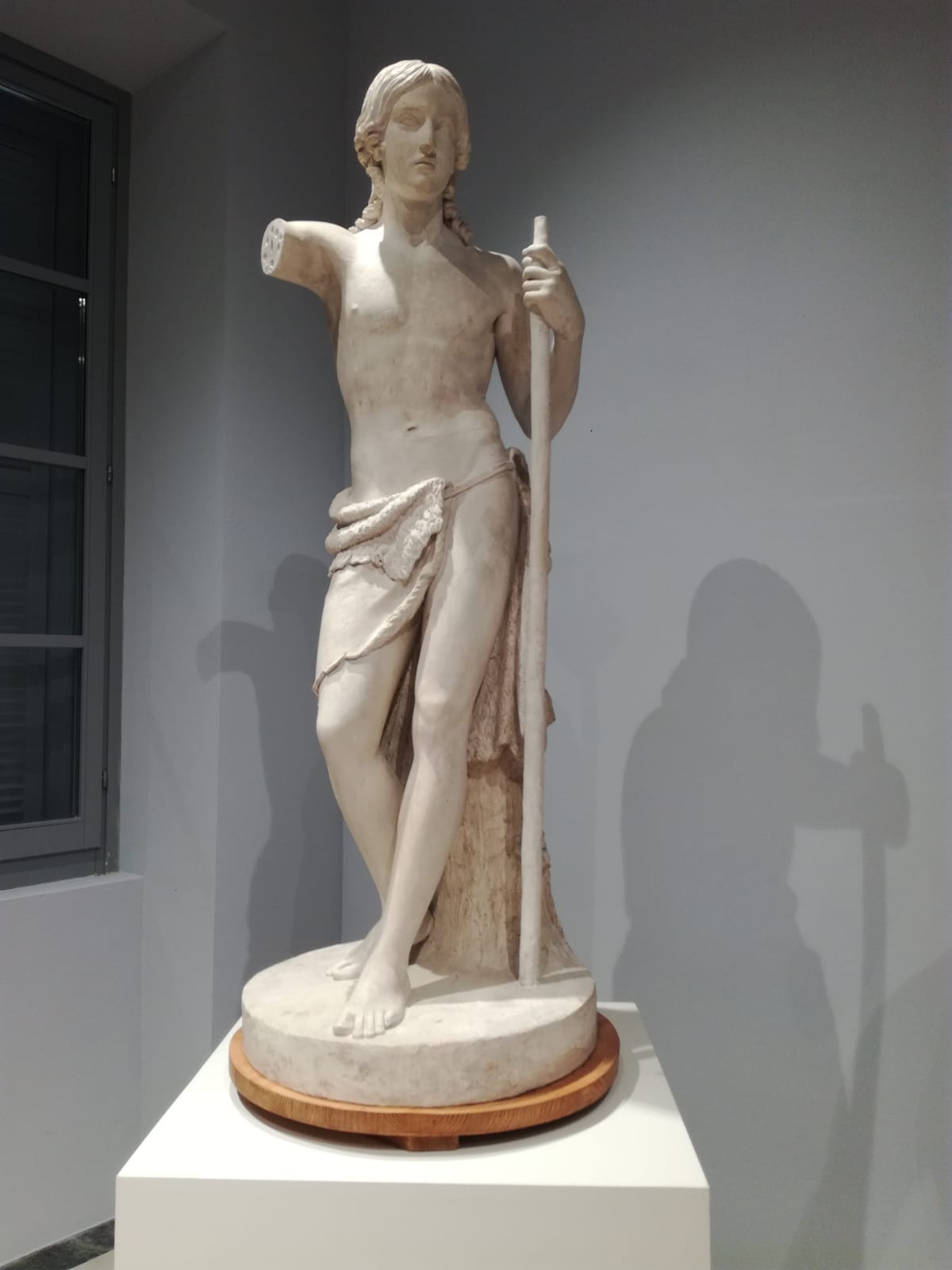 |
| Luigi Bienaimé, St. John the Baptist |
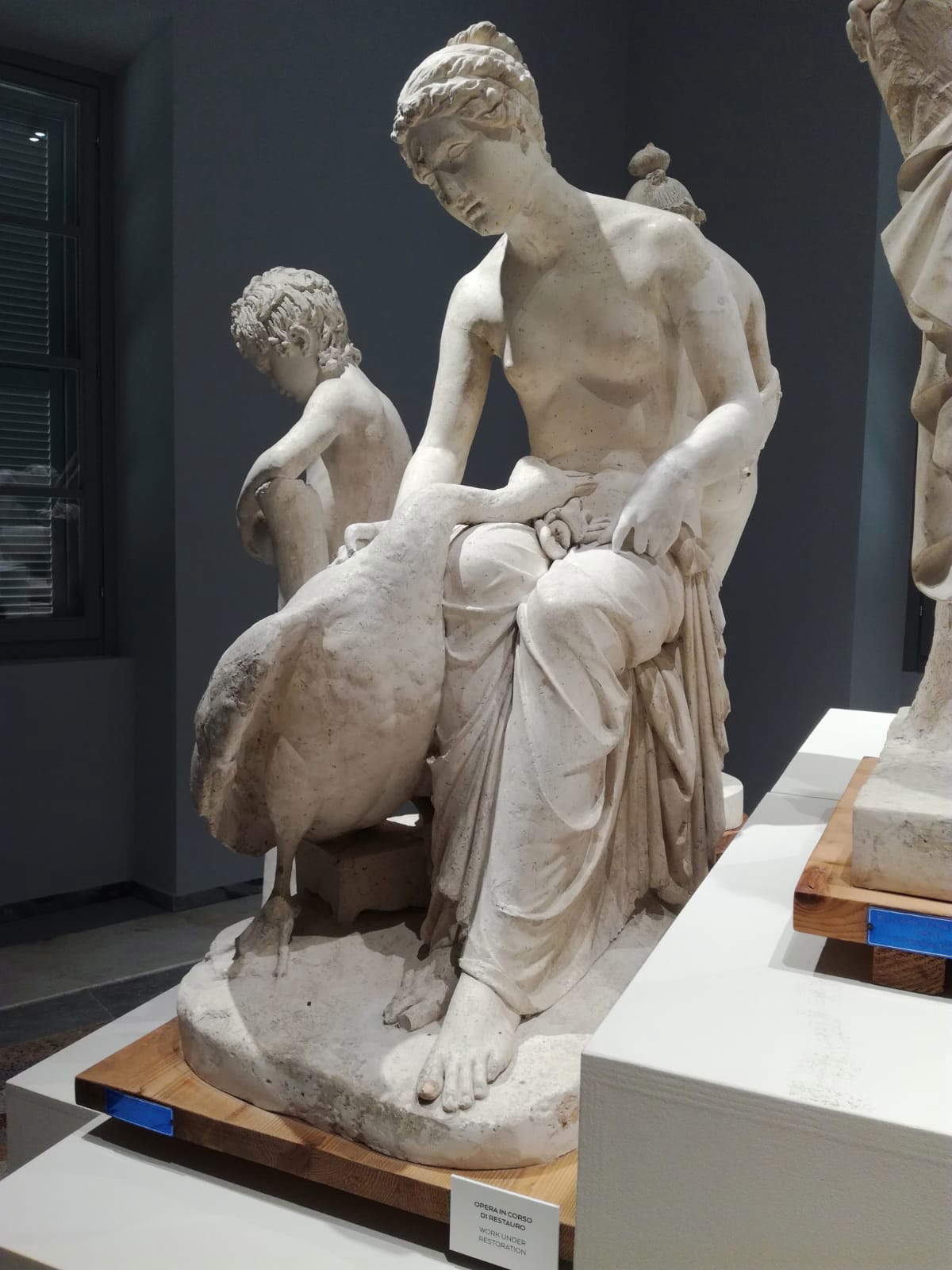 |
| Giovanni Tacca, Leda and the Swan |
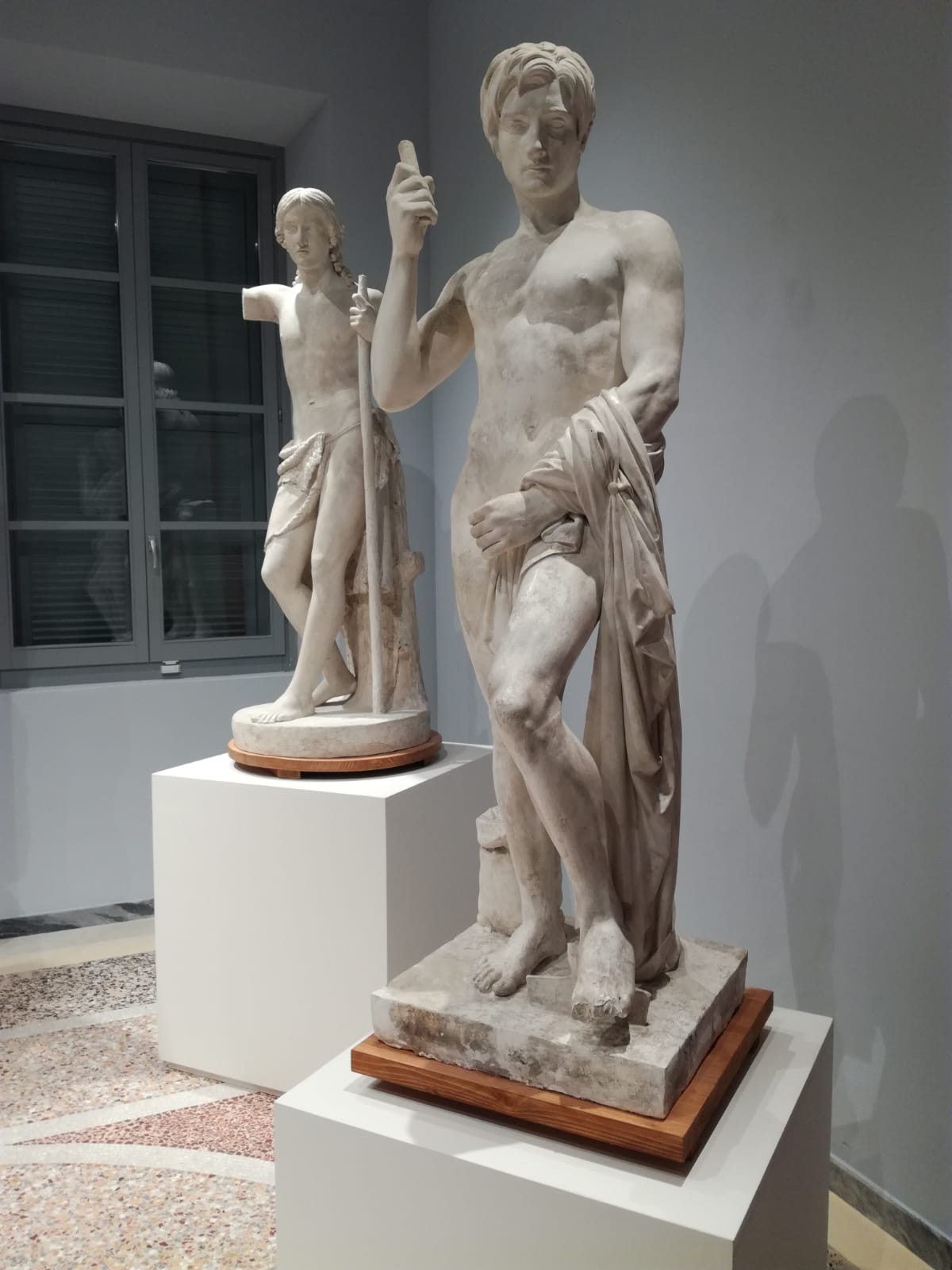 |
| Ferdinando Andrei, Farmer |
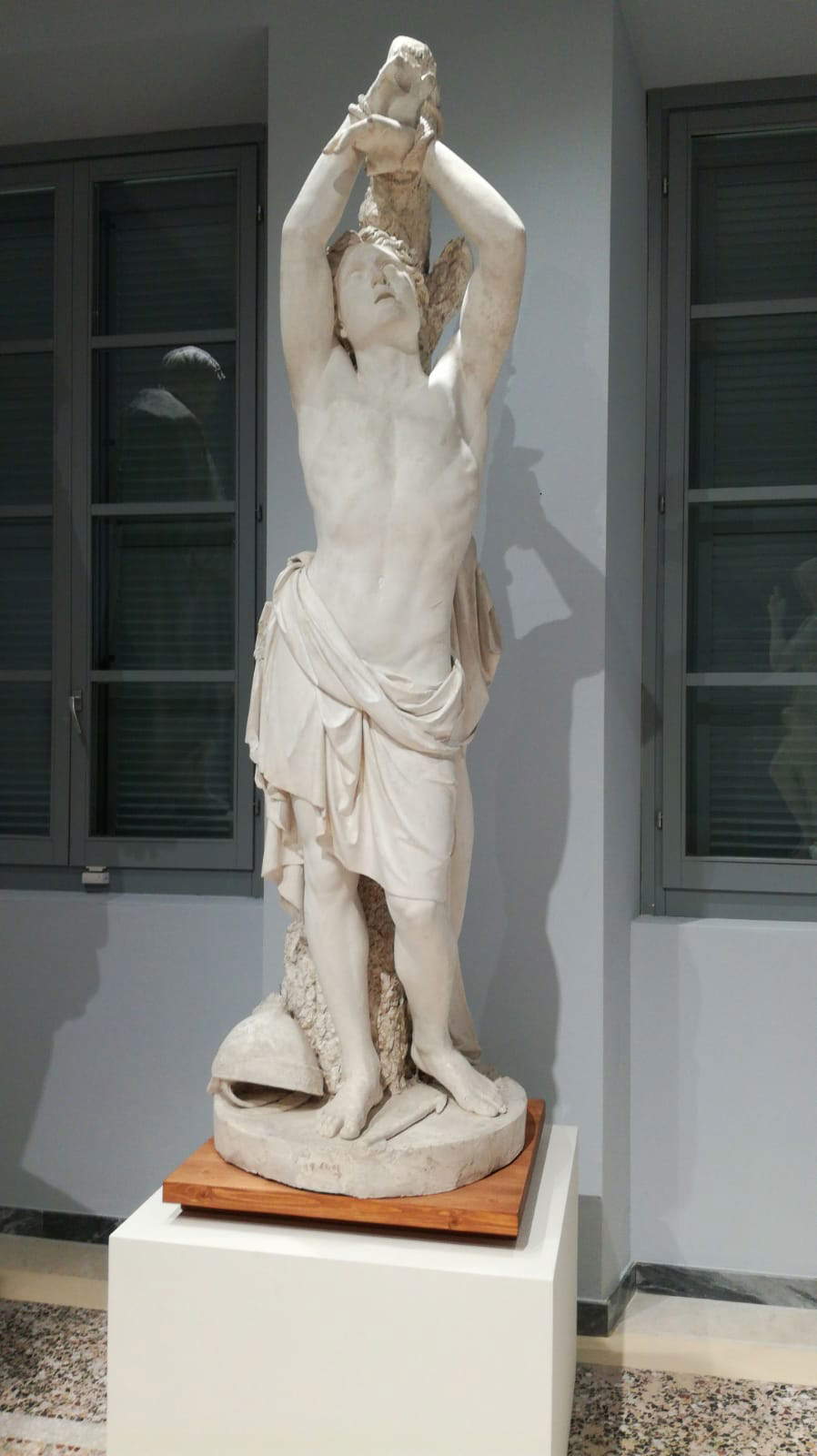 |
| Giuseppe Lazzerini, Saint Sebastian |
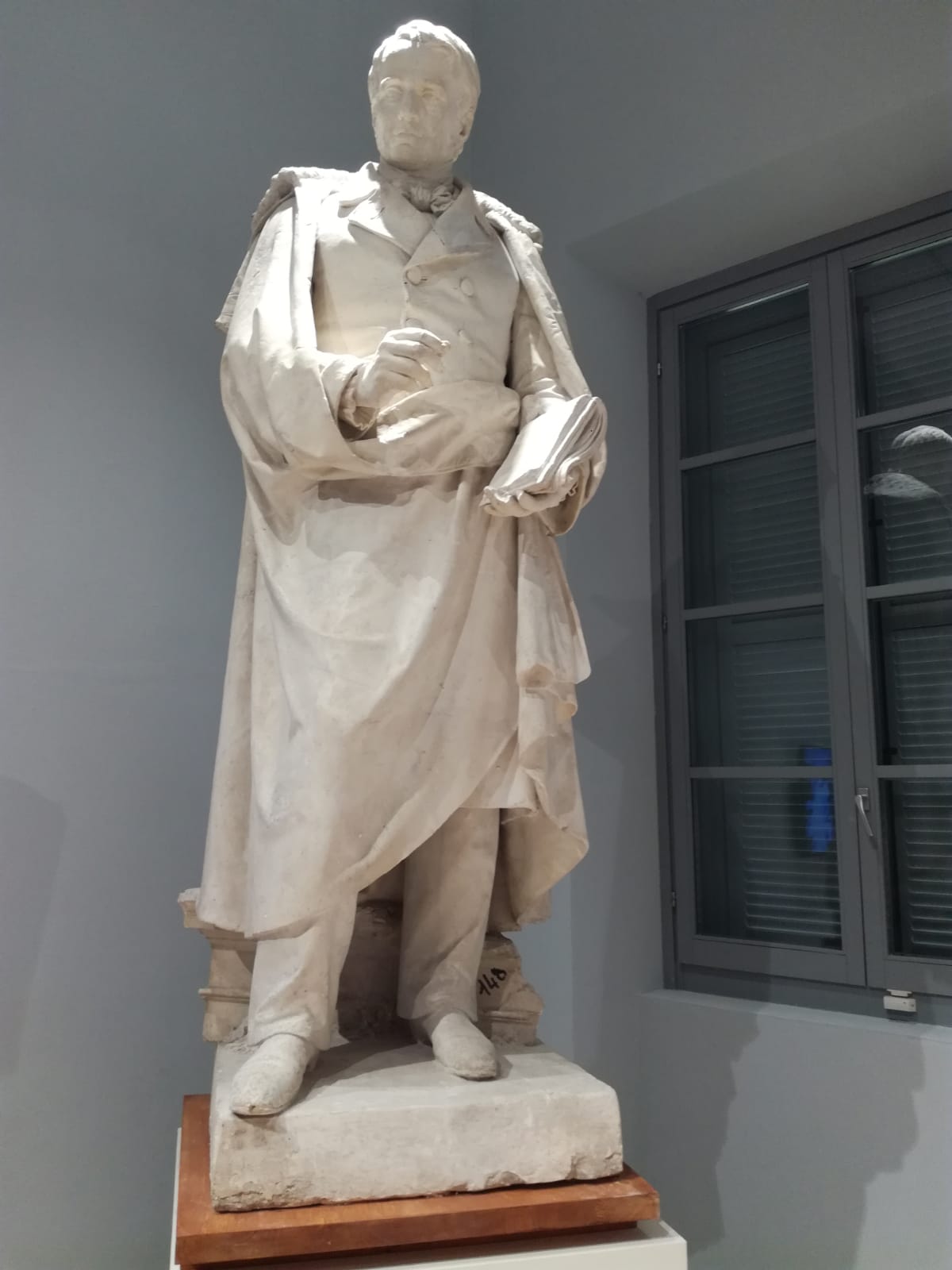 |
| Benedetto Cacciatori, The Architect Canina |
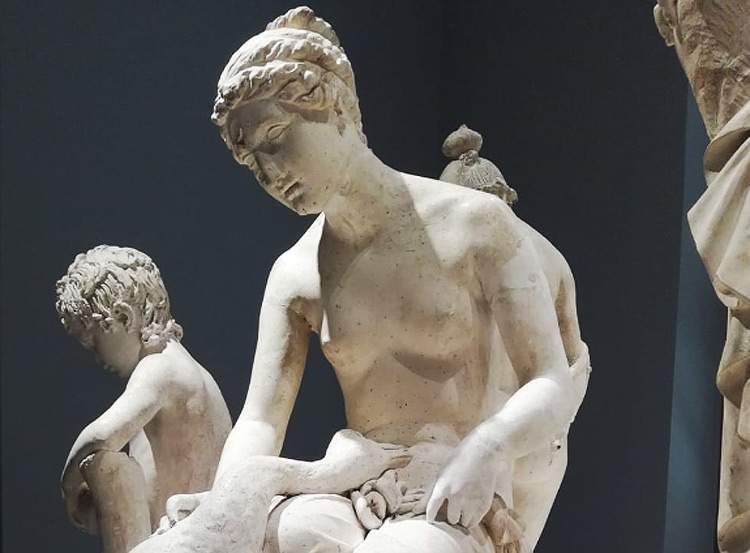 |
| Carrara, Academy of Fine Arts restores 19th century plaster casts in front of the public |
Warning: the translation into English of the original Italian article was created using automatic tools. We undertake to review all articles, but we do not guarantee the total absence of inaccuracies in the translation due to the program. You can find the original by clicking on the ITA button. If you find any mistake,please contact us.